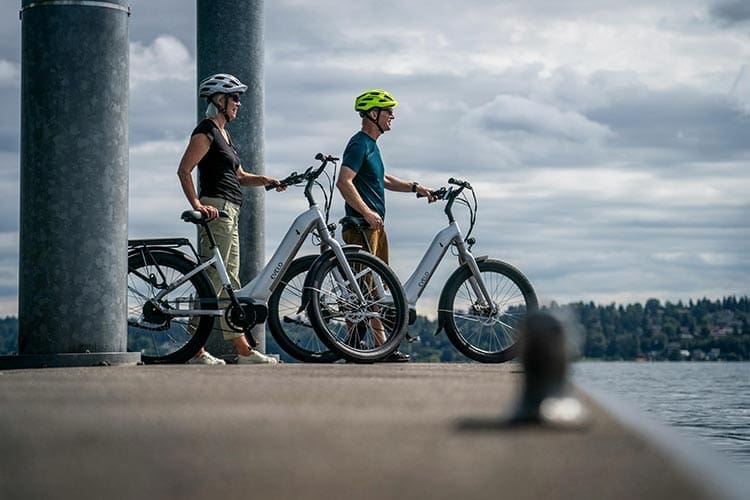Imagine cruising effortlessly along a scenic bike path, the sun on your face and the wind in your hair. Suddenly, the smooth hum of your e-bike motor falls silent, leaving you pedaling with unexpected effort. This frustrating scenario is all too familiar for many e-bike owners, often stemming from avoidable battery mistakes.
The battery of ebike powers your rides and enables those exhilarating bursts of speed. Yet, despite its importance, many riders unwittingly engage in practices that compromise battery life and performance. This guide aims to shed light on the five most common mistakes e-bike owners make with their batteries and offer practical solutions to ensure your rides remain long, enjoyable, and trouble-free. By understanding and avoiding these pitfalls, you can maximize the lifespan of your e-bike’s battery and unlock the full potential of your electric adventures.
Winterizing Your E-Bike: Essential Tips for Battery Care in Cold Weather
One of the most frequent missteps e-bike owners make is neglecting proper battery storage. Leaving your e-bike’s battery exposed to the elements or extreme temperatures can have detrimental effects on its longevity and overall performance. High temperatures, in particular, can accelerate the degradation of the battery’s internal components, leading to a reduced capacity and shorter lifespan. Likewise, storing a battery in excessively cold conditions can hinder its ability to hold a charge effectively, resulting in diminished range on your rides.
To ensure your battery’s longevity and optimal performance, store it in a cool, dry place away from direct sunlight and extreme temperatures. If you live in a region with harsh winters, consider bringing the battery indoors during the coldest months. Additionally, it’s crucial to check the manufacturer’s recommendations for the ideal storage charge level, as storing a battery fully charged or completely depleted for extended periods can also negatively impact its health. By adhering to these simple storage practices, you can significantly extend the lifespan of your e bike display and avoid those unwelcome surprises on your next ride.
It is important to note that not all e-bikes have a removable battery. If your e-bike has a non-removable battery, then you will need to store the entire e-bike indoors. You can also use a bike cover to protect the battery from the elements.
Remember to check the e-bike display for any error codes or warnings that may indicate a problem with the battery. By regularly monitoring the display, you can catch potential issues early on and take steps to address them before they cause serious damage.
E-Bike Charging Habits: Small Changes for Big Battery Benefits
Another common oversight among e-bike owners is infrequent charging of the battery. While it might seem convenient to wait until the battery is fully depleted before plugging it in, this practice can be detrimental to its overall health and lifespan. Lithium-ion batteries, commonly used in e-bikes, prefer to be kept within a certain charge range for optimal performance.
Allowing the battery to remain discharged for extended periods can trigger a phenomenon known as “deep discharge,” which can significantly reduce its capacity and overall lifespan. To avoid this issue, it is recommended to charge the battery after each ride, even if it hasn’t been fully depleted. Additionally, it’s advisable to avoid storing the battery in a fully discharged state for prolonged periods.
Regularly charging the battery, even when not in use, helps maintain its optimal voltage levels and prevents it from entering a deep discharge state. While it may seem counterintuitive, topping off the charge frequently is beneficial for the long-term health of your e-bike battery. By incorporating these simple charging habits into your routine, you can ensure that your battery remains in peak condition and ready to power your adventures for years to come.
Charging Your E-Bike Battery: Finding the Sweet Spot Between Too Little and Too Much
While ensuring your e-bike’s battery remains charged is important, there’s also a danger of going too far in the other direction. Overcharging, or leaving the battery plugged in for extended periods after it’s reached full capacity, can also harm its long-term health. Lithium-ion batteries are designed to accept a specific amount of charge, and exceeding this limit can stress the cells and accelerate their degradation.
This can lead to reduced capacity over time, meaning your e-bike won’t be able to travel as far on a single charge. In some cases, overcharging can even pose a safety risk, as it can generate excessive heat and potentially damage the battery’s internal components.
To prevent overcharging, it’s recommended to unplug the charger as soon as the battery reaches full capacity. If you’re using a cheap electric bike conversion kit, it may not include a sophisticated battery management system, so it’s even more important to be vigilant about monitoring the charging process. Set a reminder or use a timer to ensure you don’t accidentally leave the battery charging for too long. By respecting the battery’s limitations and avoiding overcharging, you can protect your investment and enjoy many miles of worry-free riding.
How to Protect Your E-Bike Battery from Extreme Weather
Extreme temperatures, whether scorching heat or frigid cold, can wreak havoc on an e-bike battery’s health and performance. Leaving your e-bike in direct sunlight during a sweltering summer day or exposing it to freezing temperatures in the winter can have detrimental effects on the battery’s longevity and efficiency. High temperatures can accelerate the chemical reactions within the battery, leading to increased wear and tear and a shortened lifespan. Similarly, extreme cold can hinder the battery’s ability to deliver power, reducing its overall range and potentially causing temporary or permanent damage.
To safeguard your e-bike battery, it’s crucial to avoid exposing it to extreme temperatures whenever possible. If you must leave your e-bike outside, try to park it in a shaded area to minimize direct sunlight exposure. In colder climates, consider storing your e-bike indoors or in a temperature-controlled environment to protect the battery from freezing. When riding in extreme weather conditions, be mindful of the battery’s temperature and take breaks if necessary to allow it to cool down or warm up. By taking these precautions, you can help ensure that your e-bike battery remains in peak condition and continues to deliver reliable performance, regardless of the weather.
Conclusion
Overcharging, or leaving the battery plugged in after it’s fully charged, can harm its lifespan and potentially damage the hub motor. Lithium-ion batteries have a specific charge capacity, and exceeding this limit stresses the cells. This can decrease the battery’s ability to hold a charge over time, reducing the distance your e-bike can travel on a single charge.
To avoid this, unplug the charger once the battery is full. If your e-bike has a basic charging system, be extra cautious. Set a timer or reminder to avoid leaving the battery connected for too long. Respecting the battery’s limits will help you enjoy countless worry-free rides.
Photo by Team EVELO
No products found.
















